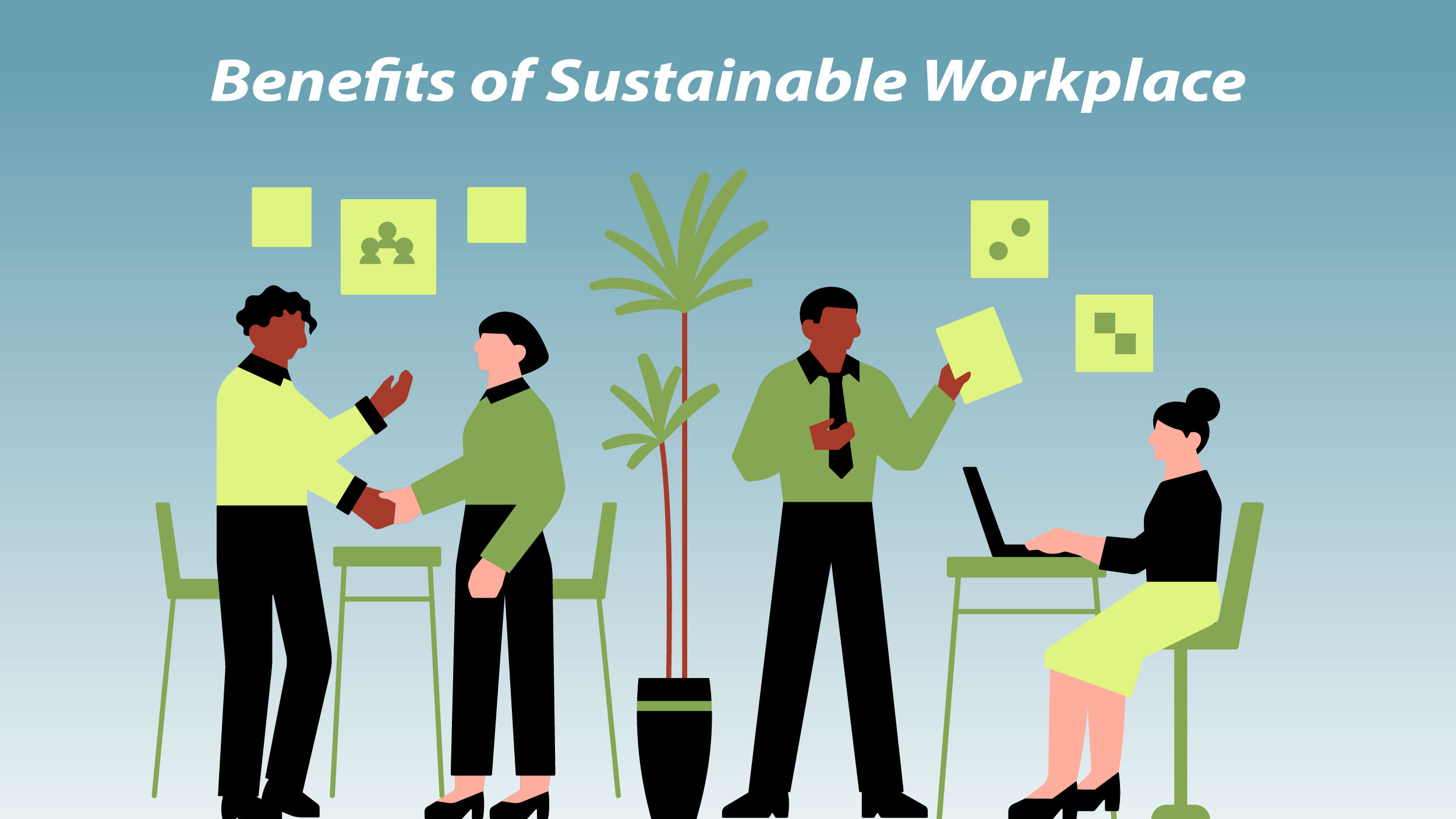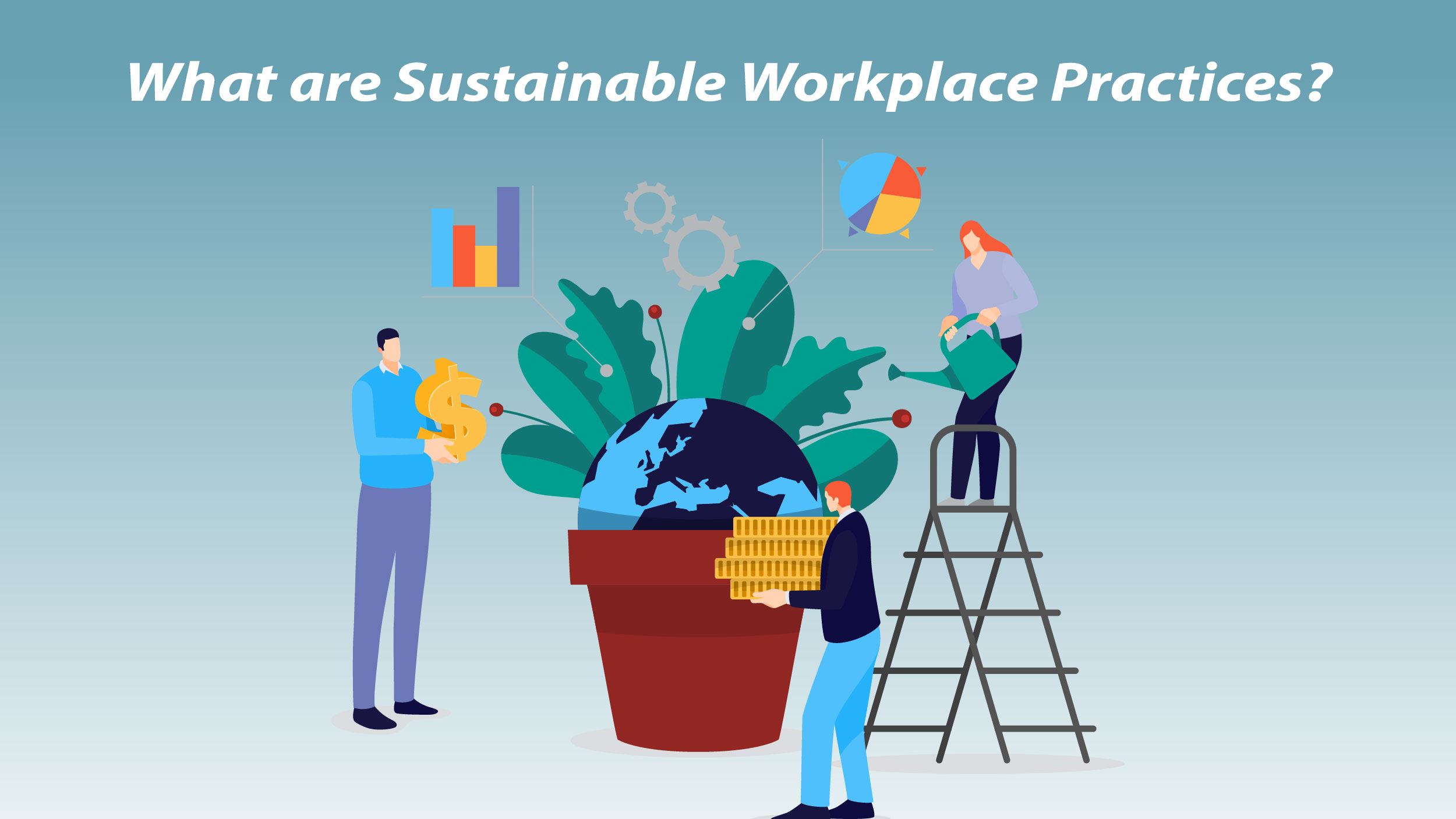4 Ways How Sustainable Workplace Saves Earth and Money At The Same Time
It’s no secret that global warming is on the rise, and our environment is paying the price. The root cause? Forgetting to be sustainable. The corporate world has had its share of environmental missteps, but now there’s a shift towards sustainability. Companies are working to shrink their carbon footprint and promote eco-friendly workplaces. It’s a win-win for the ecosystem and employees, fostering a culture of sustainability. Ultimately, the aim is to boost productivity while minimizing resource use.
Let’s dive into how we can cultivate a sustainable workplace.
What is a Sustainable Workplace?

According to the US Department of Labor, a sustainable workplace tries to balance the triple bottom line of people, planet, and profit in order to achieve long-term success and viability. This means that corporations cannot be sustainable unless they protect their most valuable resource: their employees’ safety, health, and well-being.
As a result, businesses must adopt ecologically friendly procedures. These would help them not only attract new customers but also keep the ones they already have. Going green also saves money for firms in the long run. Organizations can start by adopting several sustainable and environmentally friendly practices.
Benefits of Sustainable Workplace
The perks of a sustainable work environment are crystal clear. It’s not just an ethical choice but also a smart business move. By embracing sustainability, companies fulfill their corporate social responsibility while cutting costs and boosting employee well-being and satisfaction. These benefits can be broken into three categories: environmental, economic, and social.
1. Environmental Benefits
Opting for environmentally friendly buildings, commonly known as “green buildings,” has the potential to significantly reduce greenhouse gas emissions. By 2050, it is estimated that these buildings could save up to 84 gigatons of CO2. Additionally, green buildings are designed to be energy- and water-efficient, contributing to resource conservation. Furthermore, these buildings can also effectively reduce waste through practices such as turning off unnecessary lights, recycling empty bottles or cans, using recycled paper, and implementing geothermal heating and cooling systems. The possibilities for sustainable workplace practices in green buildings are vast and attainable.
2. Economic Benefits
Green buildings have the potential to decrease expenses and generate profits. This is mainly due to the fact that they generally require lower maintenance compared to conventional commercial buildings, with up to 20% less maintenance costs. Additionally, these buildings can significantly reduce expenses by conserving resources. Furthermore, green buildings have the advantage of experiencing an increase in asset value of around 7%.
Employees in eco-friendly workplaces tend to be happier and more productive. According to Harvard Business Review, happy employees demonstrate 31% higher productivity, 37% increased sales, and up to 3 times greater creativity. Sustainable workplace practices also attract more customers and investors. Embracing sustainability is more than a trend; it’s a lasting lifestyle change that brings substantial benefits to companies.
3. Social Benefits
Numerous research studies indicate that employees have a strong inclination towards and derive greater job satisfaction from organizations that prioritize and endorse sustainability practices. These employees also exhibit enhanced cognitive performance and are more likely to embrace sustainable habits in their personal lives, thus contributing to environmental preservation efforts. It is evident, therefore, that workplace sustainability plays a pivotal role in cultivating a positive work culture, improving work-life balance, and exerting a profound influence on employees, customers, and the global community as a whole.
What are Sustainable Workplace Practices?

Sustainable workplace practices are all about businesses and organizations doing their part to be eco-friendly and socially responsible. They want to reduce their environmental footprint, take care of their employees, and help build a more sustainable future. So, here are some important areas to consider:
● Going Digital
Although the concept may appear ludicrous at first, the long-term consequences of this strategy are immense. On a regular basis, businesses accumulate documents and print new ones. And, of course, some of these printed documents are thrown away. In fact, approximately 17% of printouts are discarded. Misprints, duplication, and other errors could be among them. Trashing documents also indicates that money has been squandered.
● Energy Efficiency
Businesses can switch to energy-efficient technology in addition to going totally digital. While this may have a significant upfront cost, the long-term benefits will make up for it.
LED bulbs are a good example of an energy-saving technology that isn’t too expensive. Businesses can lower their lighting energy use by 75 percent by replacing workplace lights with ENERGY STAR-rated LEDs.
Conducting energy audits in one’s office to track energy usage and evaluate overall efficiency is also a good idea. This allows you to see if you’re utilizing way too much energy or just enough to keep the business running. You can hire an energy audit company to help you find areas where you can save energy.
Companies can benefit from switching to a room air conditioner, which uses less electricity than complete air conditioning through their HVAC system. You may manage the temperature to be most comfortable in the sections you use most often, especially if you don’t utilize every room in your space on a regular basis.
● Going Unplugged
Even when switched off, electronic equipment and devices use energy while plugged in. As a result, employers must encourage employees to unplug electronics when they are not in use. This strategy, when paired with the adoption of energy-efficient equipment, will help businesses save money on their monthly electricity expenditures.
Connecting your laptops, peripherals, and other devices to a power strip makes it easier and more convenient to turn everything off at night or when it’s not in use by flipping a single switch. When your appliances are plugged in but not in use, they continue to consume phantom (or “vampire”) energy from the power source.
● Sharing is Caring
If you’re paying for parking places for employees, it might be more cost-effective to offer a benefit in which you pay for a monthly bus pass, metro card, or whatever else is appropriate. Additionally, encouraging carpooling in the workplace saves money and fuel. Employees connecting over a shared ride every day is an added bonus.
Inferring on the thought
Finally, you must think about your company’s long-term goals. Organizational cost-cutting strategies may not be top-of-mind every day, but if you can make a few simple tweaks, they may have a long-term good influence on your bottom line. Every bit counts, especially in business. The relationship between energy efficiency and greater profitability may not be clear at first, but if examples of sustainable workplaces began tracking those energy-saving initiatives, they would almost certainly gain in the long term from decreased overhead costs.




